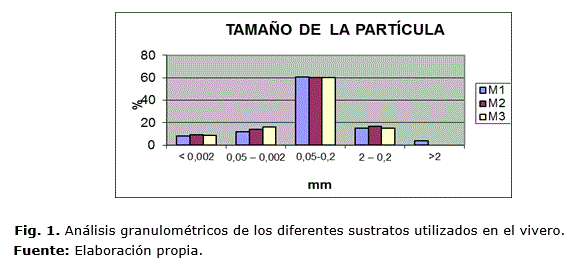Influence of three organic substrates in some morphological parameters of the plant Moringa (White acacia) obtained in live-ros container
Main Article Content
Abstract
Downloads
Article Details
References
Ansorena, M. J. 1994. Sustratos, propiedades y caracterización. Ediciones Mundi-prensa. España, 172 p.
· Aranda, L.; Castro, M.; Pardos, L.; Gil y J.A. Pardos. 2005. Effects of the interaction between drought and shade on water relations, gas exchange and morphological traits in cork oak (Quercussuber l.)
· Cairo, P. y Fundora, O. 2007. Edafología. Editorial Pueblo y Educación, Ciudad de la Habana. 476 p
· Castillo, M. I. 2006. Efecto del sustrato en el cultivo de la especie Eucalyptus grandis en vivero utilizando tubetes plásticos en el EFI Guanahacabibes. Pinar del Río. Tesis (en opción al Título académico de Master en Ciencias Forestales). Universidad de Pinar del Río 84 p.
· González, E. 2006. Memoria científica semestral del proyecto Metodología para el cultivo en vivero de diferentes especies forestales 1er semestre. 18 p.
· Himmelbauer, M. L, Loiskandl, W. y F. Kastanek, F. 2004. Estimating length, average diameter and surface area of roots using two different image analyses systems. Plant and Soil 260: 111-120.
· Landis, T.; Tinus, S.; Barnett, J.; Nesley, R.; Rodríguez, T.; Sánchez, V.; Aldana, B. 2000. Manual de vivero para la producción de especies forestales en contenedores. Vol. 2. Contenedores y medios de crecimiento. Handbook 674. 126 p.
· Montoya, J. M. y Cámara, M. A. (1996) La planta y el vivero forestal. Ediciones Mundi-Prensa. España. 126 p.
· Moreno, J. M. 2002. La materia orgánica y la capacidad de retención de humedad en sustratos. Revista Agricultura Orgánica, 8:23-25.
· Oliet, J. A. 2000. La calidad de la planta forestal en vivero. Ed. ETSIAM. Córdoba. España. 93 p.
· Pineda, O., V.; Cetina A., M.; VERA C.; Cuauhtémoc J., T.; Cervantes M.Z. 2004. Thetransplanting container-container (1+1) and container-bareroot (p+1) in Pinus greggiiengelm. Seedling production. Agrociencia. 38:(6), 8-17.
· Ramírez, A. y Rodríguez T., D. A. 2004. Efecto de calidad de planta, exposición y micro-sitio en una plantación de Quercus rugosa. Revista Chapingo. Serie Ciencias Forestales y del Ambiente. 10: (1), 13-23.
· Rangel M. Moringa oleifera, un purificador natural de agua y complemento alimentario para el nordeste de Brasil. [En línea] mayo 2010. Disponible en: http://buenastareas.com/ensayo/info-moringa-oleifera/251935.htm [Consultado junio, 2013.]
· Thompson, B. E. 1985. Seedling morphological evaluation. What can you tell by looking? In: Evaluating seedling quality: principles, procedures and predictive abilities of major test. M.L. Duryea eds. Forest Research Laboratory. Oregon State University. 59-69 p.


